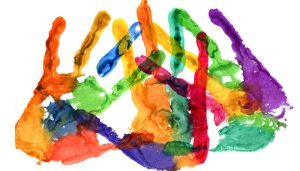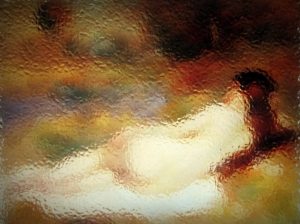What Does It Mean To Dream About Colors?

Colors are important to people around the world. Colors not only influence emotion but also have meaning in religion and various cultures.
On this page, you will find answers to questions such as: “What does the color red symbolize?”
This question is answered differently depending on where you are in the world. If you don’t see what you are looking for on this page, please post your questions in the comment section at the bottom of this page.
The cultural meaning of colors
Colors in the Western World
Semaphores: The color red means stop, the yellow means caution, and green means go. Yellow signs also warn drivers of upcoming curves, crosswalks, and animal crossings.
Patriotism: Most, if not all countries, have a flag. The colors of each flag are usually seen as patriotic. Red, white, and blue symbolize patriotism in the USA.
Holidays: Red and green are the favorite colors of Christmas.
Fall colors like orange, brown, yellow, and red are associated with Thanksgiving while black and orange are associated with Halloween.
Pastel colors are used for Easter. Because flowers are a common Mother’s Day gift, colors like yellow, pink, and red are used frequently.
Related: Toilet Dream Meaning
Psychological Symbolism of Colors
- Red: Emotion, energy, passion, love, desire, speed, strength, power, heat, aggression, danger, fire, blood, war, violence, everything intense and passionate, sincerity, happiness (Japan only).
- Rosa symbolizes love and romance, affection, tenderness, acceptance, and calm.
- Beige and ivory symbolize unification. Ivory symbolizes calm and kindness. Beige symbolizes calm and simplicity.
- Yellow signifies joy, happiness, betrayal, optimism, idealism, imagination, hope, sunshine, summer, gold, philosophy, dishonesty, cowardice, jealousy, greed, deception, sickness, danger, and friendship.
- Dark blue: Symbolizes integrity, knowledge, power, and seriousness.
- Color Blue: Peace, tranquility, cold, calm, stability, harmony, unity, trust, truth, trust, conservatism, security, cleanliness, order, loyalty, sky, water, technology, depression, appetite suppressant.
- Turquoise symbolizes calm. The teal symbolizes sophistication. Aquamarine symbolizes water. The lighter turquoise has a feminine appeal.
- Purple: Royalty, nobility, spirituality, ceremony, mysterious, transformation, wisdom, enlightenment, cruelty, honor, arrogance, mourning, temperance.
- Lavender: Symbolizes femininity, grace, and elegance.
- Orange: Energy, balance, enthusiasm, warmth, vibrant, expansive, extravagant, demanding of attention.
- Green: Nature, environment, health, good luck, renewal, youth, spring, generosity, fertility, jealousy, service, inexperience, envy, misfortune, vigor.
- Brown: Earth, Stability, Home, Home, Outdoors, Reliability, Convenience, Endurance, Simplicity, and Convenience.
- Gray: Security, reliability, intelligence, seriousness, modesty, dignity, maturity, solid, conservative, practical, old age, sad, boring. Silver symbolizes calm.
- White Color: Reverence, purity, birth, simplicity, cleanliness, peace, humility, precision, innocence, youth, winter, snow, good, sterility, marriage (Western cultures), death (Eastern cultures), cold, clinical.
- Color Black: Power, sexuality, sophistication, formality, elegance, wealth, mystery, fear, evil, unhappiness, depth, style, sadness, remorse, anger, anonymity, underground, good technical color, mourning, death (Western cultures), austerity, detachment.
Related: Makeup Dream Meaning
Colors in the West
- Marriage: White and pink are the favorites just like in the western world.
- Green: Eternity, family, harmony, health, peace, posterity
- Happiness: Red
- Usefulness: Gray
- Wealth: Blue, gold, and purple
- White: Children, useful people, marriage, mourning, peace, purity, travel
- Gold: Strength, wealth
- Black: Evil or sadness, as in the western world, black.
Colors and Emotions:
Blue is seen as conservative. Red is power and aggression. The brightest colors like yellow and orange represent heat not only with emotions but also with temperature.
Cool colors are blue, green, black, or any color with a dark undertone.
When someone feels depressed or depressed, they are said to feel “sad.” When someone gets angry, they “see red.” When someone is seen with fear or “chicken” it is called “yellow”.
Ecology and Nature:
Green is the main color that symbolizes ecology. The new phrase for people or businesses that find ways to reduce electricity, fuel, or things that harm the environment is “go green.”
Related phrases and expressions:
- When something is seen as opposite, extreme, or a firm position, it is said to be “black or white.”
- When something is not clear or is not in a firm position, it is said to be a “gray area”.
- Blues (Blue) describes a form of music.
Religion:
Colors are also used in religious ceremonies or represent aspects of religion. Native Americans include colors in religious ceremonies. The Navajo Nation considers four colors to be important: turquoise, white, yellow, and black.
These colors represent four sacred mountains. The Apache Nation also considers four colors to be important: green, white, yellow, and black.
These are the sacred colors of the white mountain and are also used in government. The Iowa nation also considers four colors sacred: black, yellow, red, and white. They represent the address, its flag, and what they consider the four races of man.
In Tibetan Buddhism, blue is the color of Vairochana, a heavenly Buddha, whose image is the vastness of the blue sky.
Buddhist monks wear orange robes (specifically saffron colored) mainly due to tradition.
That was the least expensive color dye at the time and that’s what they kept using. The robes symbolize “simplicity and detachment from materialism.”
Green is the traditional color of Islam. The Islamic flag is green. Green is also mentioned in the Qur’an as the color of clothing, cushions, and rugs in paradise.
In Hinduism, saffron is its most sacred color. Saffron represents the fire that burns our impurities. Yellow represents knowledge and learning. The green color of Maharashtra represents life and happiness.
The color blue is like infinity, like the vastness of the oceans and the sky.
In Christianity, the color red symbolizes the blood of Jesus Christ and sacrifice. White represents the body of Christ. Black represents sin in the Catholic liturgy.
Gray is the color of ash and this represents repentance in Catholicism. Purple is the liturgical color for the Advent and Lenten seasons. Heaven is described as having a lot of gold in buildings and streets.
White and silver are used in the liturgy during Christmas and Easter.
The Bible says that many in the Middle East and Rome valued colored gems and jewelry. Red and white coral was used for beads and ornaments.
Red rubies and light blue turquoise were gifted. (Ezekiel 27:16)
Related: Ring Dream Meaning
Coloretapia and the Use of Color in medicine and therapy
Colors are sometimes used in therapy (also called chromotherapy). Colors have a huge effect on people who have brain disorders or who have emotional problems.
The color blue has a calming effect on many people and reduces respiration and blood pressure. Red has the opposite effect.
Some therapists use green to calm and relax people with emotional disorders who suffer from anxiety or depression.
Some claim that the violet and magenta color is good for migraines and in “cases of cellulite caused by poor elimination, heaviness or laziness after eating, spleen, bladder and kidney disorders.”
Yellow helps energize people and alleviates depression.
The world of Color in culture and Marketing
Color means many different things to different people and cultures. We all have our favorite colors. People like different colors, as well as different foods.
Color also represents feelings, people, countries, cultures, and color symbolism. In the western world, the color red is frequently seen as a symbol of anger or aggression.
Some auto insurance companies charge more for red cars because some of the owners of red cars are more aggressive or take more risks.
Related: Bible and Verses Dream Meaning
History, Art, and Literature
Black: The Story of a Color. - Black - a favorite color of priests and penitents, artists and ascetics, fashion designers and fascists - has always been synonymous with powerfully opposing ideas: authority and humility, sin and holiness, rebellion and conformity, wealth and poverty, the good and the bad.
In this picture book, the acclaimed author of “Blue” tells the fascinating social history of the color black in Europe.
Color and Meaning: Art, Science, and Symbolism. - Does color affect our feelings? The phenomenon of color is examined in new ways in John Gage’s latest book.
His study is based on the conviction that color is a contingent and historical event whose meaning, like language, resides in the particular contexts in which it is experienced and interpreted.
Veiled Brightness: A History of Ancient Maya Color. - Veiled Brightness reconstructs what color meant to the ancient Maya, a set of linked peoples and societies that flourished in and around the Yucatan Peninsula of Mexico and Central America.
Using knowledge of archeology, linguistics, art history, and conservation, the book describes more than two millennia of color used in a region famous for its aesthetic refinement and a high degree of craftsmanship.
Pantone Guide to Communicating with Color. - This authoritative guide presents hundreds of color combinations and color principles needed to create effective designs.
Each lesson is demonstrated by example, allowing designers of all specialties and levels of experience to make the best color choices for each type of design.
Related: Naked Dream Meaning
Recent Posts
Recent Articles

What Does It Mean To Dream About Tests or Examination?
"I Did Not Do Well In The Test" If you dream that you are taking a test or ex…

The Biblical Meaning Of Falling Teeth In Dreams And Its Spiritual Message
"I Can't Stop Losing My Teeth!" The dreams that we hears about most frequentl…

The Biblical Meaning Of Most Common Dreams About Snake
"I Was Bitten By A Snake!!" The snake is one of the most typical animals to a…

The Biblical Meaning Of Dreams About Being Naked And Its Spiritual Message
“I'm Naked!" You are going about your normal routine, such as going to scho…




